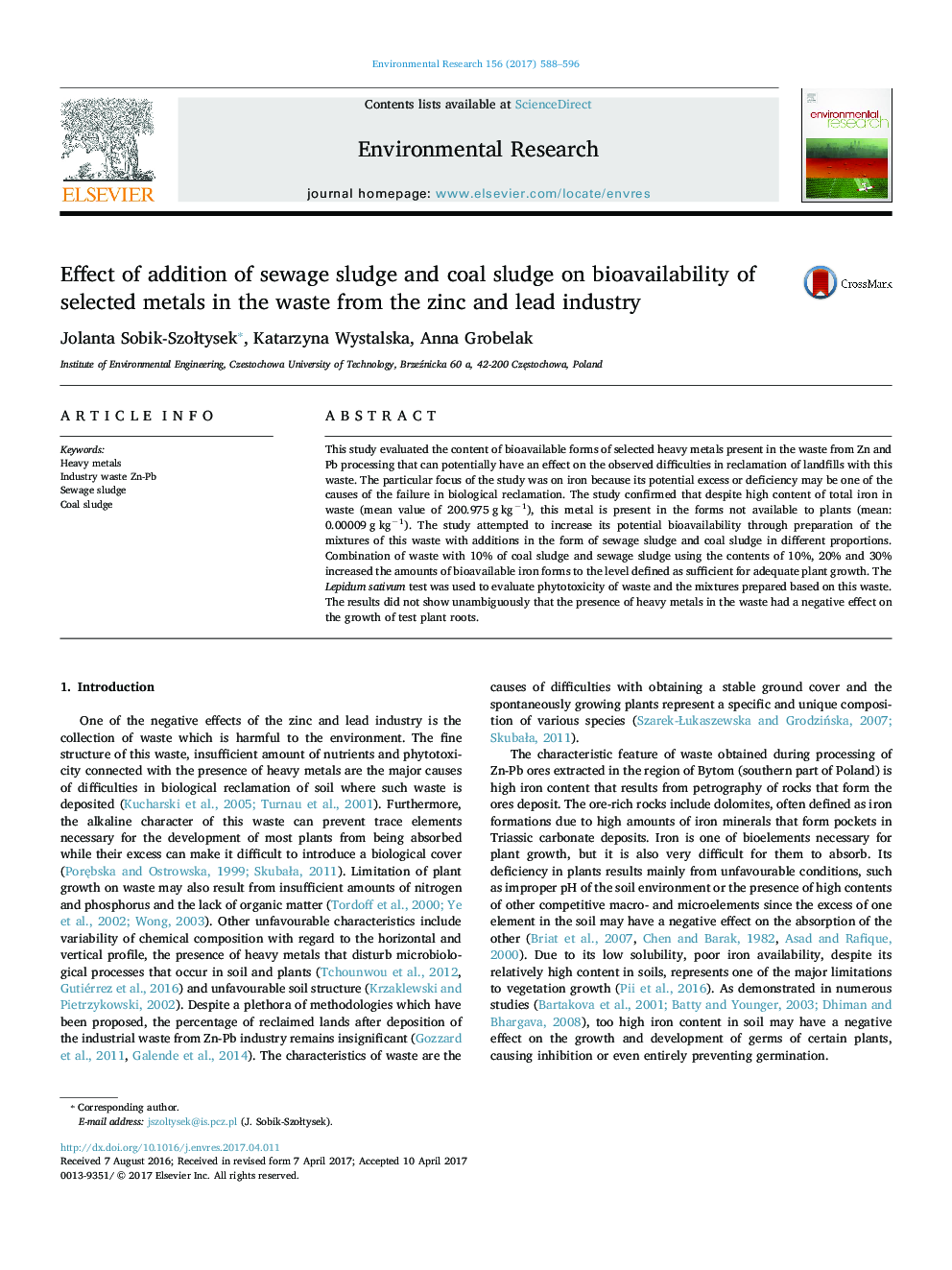| Article ID | Journal | Published Year | Pages | File Type |
|---|---|---|---|---|
| 5756530 | Environmental Research | 2017 | 9 Pages |
Abstract
This study evaluated the content of bioavailable forms of selected heavy metals present in the waste from Zn and Pb processing that can potentially have an effect on the observed difficulties in reclamation of landfills with this waste. The particular focus of the study was on iron because its potential excess or deficiency may be one of the causes of the failure in biological reclamation. The study confirmed that despite high content of total iron in waste (mean value of 200.975 g kgâ1), this metal is present in the forms not available to plants (mean: 0.00009 g kgâ1). The study attempted to increase its potential bioavailability through preparation of the mixtures of this waste with additions in the form of sewage sludge and coal sludge in different proportions. Combination of waste with 10% of coal sludge and sewage sludge using the contents of 10%, 20% and 30% increased the amounts of bioavailable iron forms to the level defined as sufficient for adequate plant growth. The Lepidum sativum test was used to evaluate phytotoxicity of waste and the mixtures prepared based on this waste. The results did not show unambiguously that the presence of heavy metals in the waste had a negative effect on the growth of test plant roots.
Keywords
Related Topics
Life Sciences
Environmental Science
Health, Toxicology and Mutagenesis
Authors
Jolanta Sobik-SzoÅtysek, Katarzyna Wystalska, Anna Grobelak,
